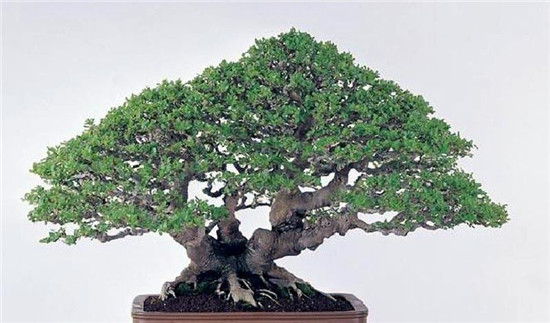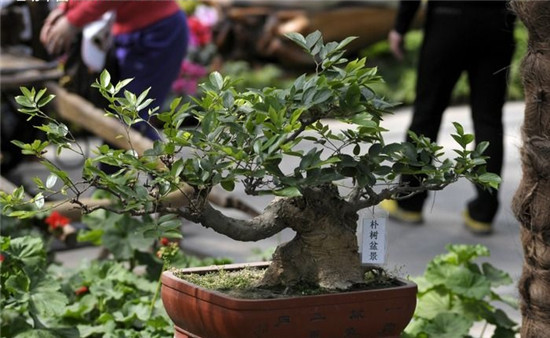The characteristics and habits of Magnolia lanceolata
Pushu is a deciduous tree of nettles, which is often cultivated for bonsai. Next, let's get to know it in detail.

The introduction of Pu Shu
Magnolia, Ulmaceae, Magnolia. Deciduous trees, bark gray, smooth, rough without dehiscence, branches spreading. The leaves are thick, broadly ovate or round, the middle and upper margins are serrated, the leaf surface is glabrous, and the leaf veins are sparsely pubescent along the back. Different flowers of the same plant, male flowers clustered in the lower leaf axils of the current year's branches; female flowers solitary in the upper leaf axils of the branches, 1-3 flowers aggregated. Drupe nearly globose, orange-red when ripe, flowering in April, fruit ripening in October. Mostly born in the shade-tolerant parts of the plain; distributed in the Huaihe River Basin, south of the Qinling Mountains to the provinces and regions of South China, scattered in the plains and low mountainous areas, and common near villages.
Garden use: Park tree has a wide crown and rich shade, which is most suitable for parks and gardens as shade trees. It can also be used as street trees for streets and highways. Urban residential areas, schools, factories and mines, street green space and rural "four sides" greening can be used, and it is also a wind-proof and embankment tree species in the river network area. It can also be used as village landscape material.
Habit: like light and endure shade. Like thick, moist and loose soil, resistant to drought and barren, light saline-alkali resistance, water and moisture resistance. Strong adaptability, deep roots, strong sprouting power, wind resistance. Resistant to smoke, dust and pollution. The growth is faster and the life is long.

The characteristics of Pu Shu
Deciduous trees, up to 20 m tall, crown oblate. Bark grayish brown, rough without dehiscence, branches spreading. Leaves broadly ovate or elliptic, apex shortly acuminate, base askew, margin upper part shallowly serrate, leaf veins Ternate, lateral veins less than six pairs, not directly to leaf margin, leaf surface glabrous, leaf veins sparsely pubescent along back. Flowering April, flowers 1-3 born in the axils of branches and leaves of the current year. Fruit mature in October, drupe nearly spherical, orange-red when ripe, drupe surface concave and ridged back, solitary or two concomitant.
The habits of Pu Shu
Like the light, bear the shade slightly. Resistant to moisture, but also has a certain cold resistance. Lax requirements for soil, like fertile, moist and deep soil, resistant to light saline-alkali soil. Deep-rooted, strong wind resistance. It has a long life, and 200-300-year-old trees are common in the central distribution area. Anti-soot and toxic gases.
The function of Pu Shu
Because of its rich shade and broad crown, it is an important tree species for urban and rural greening. It can be planted alone as a shade tree or as a street tree. And can be selected for plant mining area greening and windbreak, embankment tree species. It is also a common tree species for making bonsai.

The process of making Pushu bonsai
1. Selection of basin
The main ornamental value of Pushu bonsai is classical elegance, so it is suitable to use purple sand pottery basin or glazed pottery basin, the pot shape is preferably rectangular, square or oval, and should be determined according to the tree shape. Because the leaves of Pushu are dense, the leaves are dark green, and the bark is grayish brown and rough, so the basin color had better be light yellow or ochre brown, in order to play the role of contrast.
2. Using soil
Pushu does not pick the soil, and its adaptability is strong, but it grows better under the condition of fertile, loose and well-drained sandy loam. In bonsai cultivation, pastoral soil is generally mixed with sand or rice chaff ash, which is more suitable for the formation of loose soil environment and more conducive to the growth of Magnolia lanceolata.

3. Planting
It is best to plant after autumn or before sprouting in spring. When planting, the root system should be trimmed properly, cutting off the overlong main root, leaving more lateral root and whisker root to loosen the soil, and at the same time, the branches and leaves should be properly pruned. If you plant in a medium-shallow pot, you also need to fix the root at the bottom of the pot with wire to avoid lodging.
The pose technique of making Pushu bonsai
1. Processing
The modeling of Pushu mostly uses the method of coarse binding and fine cutting, while the big tree processing of Lingnan School adopts the method of pruning completely, which imitates the technique of Lingnan painting, pays special attention to cutting skills, stores branches and truncates, and pays attention to the effect of overall composition. The bonsai made by this pruning method can maintain a beautiful shape no matter when the branches and leaves are luxuriant or when the leaves fall in winter.
2. Tree shape
Park tree bonsai is not picky in terms of tree shape, whether it is made into straight dry type, oblique dry type, curved dry type, horizontal dry type or stone-attached type, it can show a beautiful posture. Its branches and leaves can be tied or trimmed into round pieces in the shape of steamed bread, or processed into a natural tree shape.
The above is the whole content of the characteristics and habits of Pushu plants that I have summarized for you. I hope this article can help you. Please continue to follow us.
I hope this article can help you all. Please continue to follow us.
- Prev

Common daily cultivation methods of succulent plants
Common daily cultivation methods of succulent plants
- Next

[radiation protection plants] which radiation protection plants are suitable to be placed next to the computer
[radiation protection plants] which radiation protection plants are suitable to be placed next to the computer
Related
- Wuhan Hospital Iron Tree Blooming Result Was Instantly Frightened by the Gardener Master
- Which variety of camellia is the most fragrant and best? Which one do you like best?
- What is the small blue coat, the breeding methods and matters needing attention of the succulent plant
- Dormancy time and maintenance management of succulent plants during dormancy
- Minas succulent how to raise, Minas succulent plant pictures
- What are the varieties of winter succulent plants
- How to raise succulent plants in twelve rolls? let's take a look at some experience of breeding twelve rolls.
- Attention should be paid to water control for succulent plants during dormant period (winter and summer)
- Watering experience of twelve rolls of succulent plants
- Techniques for fertilizing succulent plants. An article will let you know how to fertilize succulent plants.

